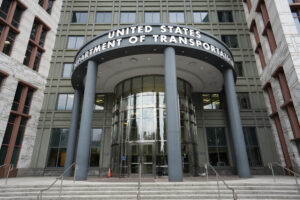Freight Fraud: Protecting Your Supply Chain

An increasingly complex global supply chain environment and increasing reliance on technology have created a setting where freight fraud has become a significant concern over the last few years. Understanding the different types of fraud and implementing effective strategies can help supply chains limit their exposure and protect their operations.
Types of Freight Fraud
- Identity Theft: Businesses are just as susceptible to identity theft as individuals. Fraudsters may pose as legitimate carriers or brokers by using stolen or forged credentials. They may also create fake companies that appear trustworthy.
- Cargo Theft: This is your traditional heist and involves the actual, physical theft of goods during transit. This type of fraud can happen through stolen vehicles, hijacking, fictitious pickups, or warehouse burglaries. Theft also means portions of shipments that frequently go missing and unnoticed until unpacking.
- Double Brokering: A fraudulent broker re-brokers a load to another carrier without the shipper’s knowledge. This often results in unpaid carriers and lost freight. RCT has a strict no-tolerance double brokering policy.
- Phantom Shipments: In this scheme, fake documents and invoices for non-existent shipments are created, and trick businesses into paying for services that were never provided.
- Payment Fraud: Deceptive practices are used to manipulate payment processes, such as creating false invoices for services not rendered or with the intent to divert funds to unauthorized accounts.
Freight thieves are smarter than most would like, and in many cases, several of these fraud types are used in tandem to swindle all levels of a supply chain.
What can you do to Limit Exposure to Freight Fraud?
- Train Employees: Educate your employees on recognizing phishing attempts and fraudulent schemes and teach them to use their instincts. If something feels off, it most likely is. Ensure they verify all financial transactions directly with the carrier or broker to avoid falling victim to payment fraud.
- Verify, Verify, Verify:
- Always verify the credentials of brokers or carriers using trusted databases like Carrier411 or the Federal Motor Carrier Safety Administration (FMCSA) SAFER database. Ensure their DOT and MC numbers are legitimate and match their registration.
- Call warehouses, shippers, and forwarders repeatedly to verify names, phone numbers, and insurance information. Check this information against any documents, POs, PODs, Bills of Lading, and Invoices.
- Certify carrier insurance coverage vs. load value.
- Document Everything: Keeping detailed records and closely monitoring shipments can prevent unauthorized access to freight and financial transactions.
- Utilize Technology: GPS tracking and real-time asset monitoring systems can be implemented to watch over high-profile shipments. As a result, digital platforms can alert you to any suspicious activities during transit. The cost can be a pass-through but proceed with caution. Not all stakeholders will accept this expense or appreciate the Big Brother effect.
- Conduct Regular Audits: Perform regular internal audits of your freight operations to identify discrepancies or unusual activities.
- Secure Data Systems: Protect your data systems with strong cybersecurity measures to safeguard sensitive information. Diligently maintain these systems regularly.
- Collaborate with Industry Peers: Work together with other industry players and law enforcement agencies to share information and intelligence about potential fraud schemes. Generally, this collaboration can help mitigate and prevent criminal activities.
Fraud is Suspected, Now What?
If you suspect freight fraud, it is important to report it to local law enforcement, especially the U.S. Department of Transportation’s Office of the Inspector General. The Federal Motor Carrier Safety Administration has a comprehensive list of action steps we recommend following which includes notifying the insurance company.

Finally, by understanding these types of fraud and implementing proactive strategies, supply chains can significantly reduce their risk of falling victim to freight fraud. Use common sense, stay vigilant, utilize technology, and verify credentials to keep your operations secure.
